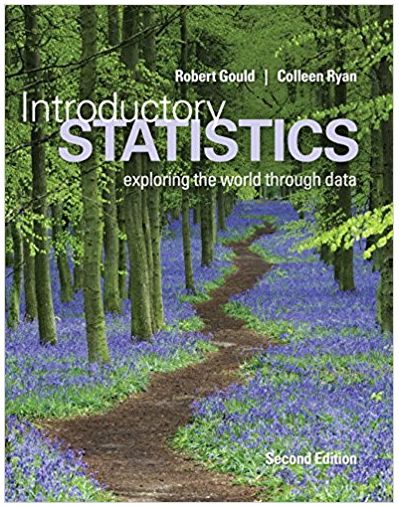Question
Achieve 3000 The Judicial Branch WASHINGTON, D.C. The judicial branch, the part of the federal government that interprets laws, is the basis for the U.S.
Achieve 3000 The Judicial Branch
WASHINGTON, D.C. The judicial branch, the part of the federal government that interprets laws, is the basis for the U.S. court system. You may have heard of the Supreme Courtthe highest court in the land. But the federal court system also includes lower courts, where most cases involving federal laws are heard. (Cases involving state laws are heard in state courts.) Federal cases are presided over by federal judges, who are appointed by the president, with approval from the Senate.
Federal court cases are tried in one of the nation's 94 district courts, but not all cases are the same. When someone has been accused of a crime, that person's case is called a criminal case, and the purpose of the trial is to determine guilt or innocence. But what about cases where people have a disagreement that they can't resolve on their own? In these civil cases, the goal is not to decide if someone is guilty or innocent but to ascertain which side's version of the story has the law in its favor.
The decision made in district court isn't necessarily the end of the case. If the losing side believes there has been an error, it can ask a higher courtcalled an appellate courtto review the verdict and overturn it (replace it with a different decision). Because there are two levels of federal appellate courta court of appeals and the U.S. Supreme Courtcases are thought of as going "up" through the court system. An appeal begins in a court of appeals and may go all the way up to the Supreme Court, if the Supreme Court justices decide to hear the case. Unlike district court, there is no jury at the appellate level. Instead, there's a panel of judges that makes its decision through a majority vote.
In the Supreme Court, a panel of nine justices hears the cases. The Supreme Court gets to choose which cases to takeand it doesn't take very many! Often, cases that make it to the Supreme Court are disputes about whether a law is constitutional. Once the Supreme Court has ruled that a law is unconstitutional, that's it, and only the Court itself can reverse the decision. The power to decide what is constitutional is called judicial review.
Although the Supreme Court was established in the Constitution, the document didn't mention judicial review. The Supreme Court's power to interpret the Constitution was established in an 1803 case called Marbury v. Madison. Here's some background on this case:
In 1800, during his last weeks in office, President John Adams appointed a bunch of men to be justices of the peace. Each man was to receive a paper commission from the president. (Basically, a commission would have been written confirmation that the appointment was made.) But by the time the commissions were ready, President Thomas Jefferson had taken office. Jefferson refused to send the commissions. One appointee, William Marbury, asked the Supreme Court to issue a legal order called a writ of mandamus requiring Marbury's commission to be delivered. (Most cases start in lower courts, but in 1789, Congress had passed a law saying people could start at the Supreme Court if all they wanted was a writ of mandamus.) The Court said it had no power to issue the writ. Why? The Constitution says only certain kinds of cases can start at the Supreme Court, which meant that the 1789 law was unconstitutional. This was the first time the Supreme Court ruled that a law was unconstitutional. The case established that the Supreme Court has the power of judicial review.
The judicial branch has a crucial role in the government. The legislative branch makes laws. The executive branch enforces them. But it's the judicial branch that interprets the laws and decides whether they are constitutional.
What is this Article mainly about?
A.Once the Supreme Court has ruled that a law is unconstitutional, only the Court itself can reverse the decision. B.The judicial branch is the basis for the U.S. court system and is tasked with the crucial role of interpreting laws and deciding whether they are constitutional. C.The power of judicial review does not appear in the Constitution and was established during an 1803 Supreme Court case called Marbury v. Madison. D.Federal cases are tried in one of the nation's 94 district courts, but some continue to move "up" through the court system.
Step by Step Solution
There are 3 Steps involved in it
Step: 1

Get Instant Access to Expert-Tailored Solutions
See step-by-step solutions with expert insights and AI powered tools for academic success
Step: 2

Step: 3

Ace Your Homework with AI
Get the answers you need in no time with our AI-driven, step-by-step assistance
Get Started


